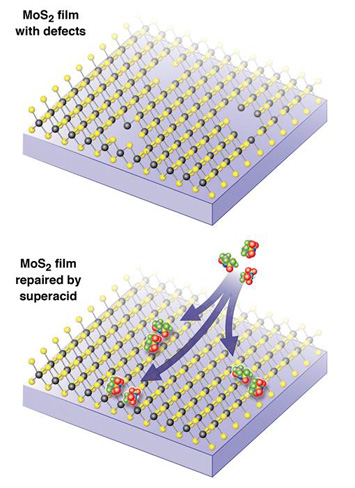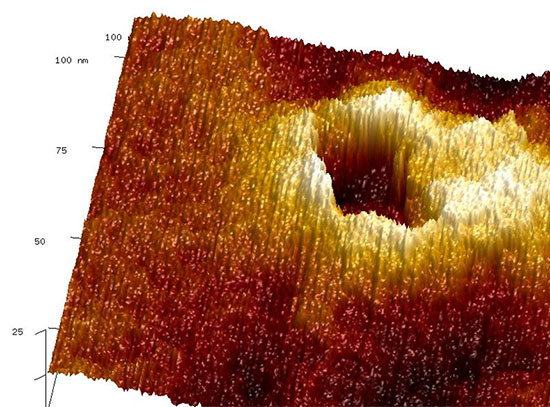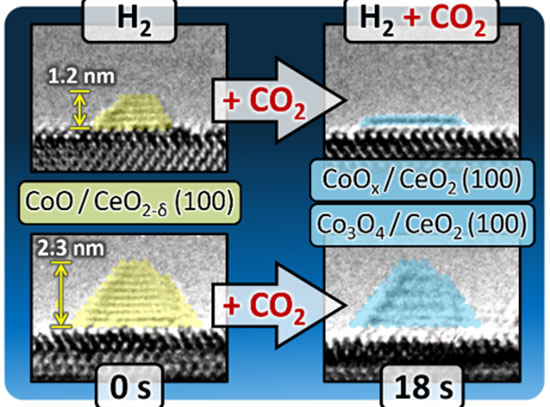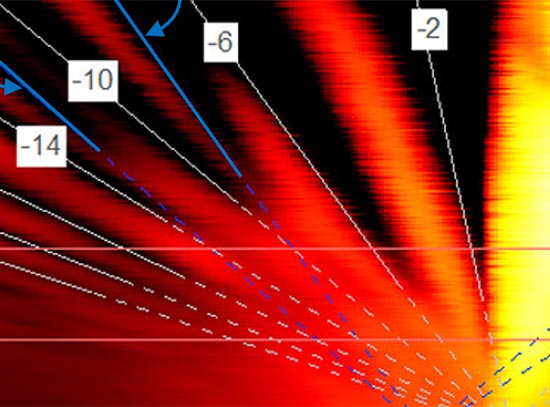Superacids are good medicine for 2D semiconductors
September 29, 2017
What is the scientific achievement?
Layered transition-metal dichalcogenides (TMDs) such as molybdenum disulfide (MoS2) hold promise for flexible electronics and optoelectronics. While large-area synthesis of these materials is required for their commercialization, films produced by such processes are plagued by structural defects that degrade device performance. This work presents a new synthesis of single-crystal monolayer MoS2 films >200 µm in size, and demonstrates a new process for healing defects by treatment with superacid.
Why does this achievement matter?
Wearable computers are an emerging trend that requires mechanically flexible devices. Power-efficient and high-speed TMD-based transistors are key enablers for this emerging technology, and this work is an important step towards realizing them.
What are the details?
(Top) Illustration of a two-dimensional molybdenum disulfide film with structural defects. (Bottom) Treatment with superacid heals structural defects and improves the electronic performance of the material. enlarge
enlarge
CFN Capabilities:
CFN Materials Synthesis and Nanofabrication Facilities were used for device fabrication. Defect studies were performed in the Proximal Probes facility.
Publication Reference
A. Alharbi, P. Zahl, and D. Shahrjerdi, Material and device properties of superacid-treated monolayer molybdenum disulfide, Applied Physics Letters 110, 033503 (2017).
DOI: Material and device properties of superacid-treated monolayer molybdenum disulfide
Acknowledgement of Support
This work was supported in part by NSF award #1638598. This research used resources of the Center for Functional Nanomaterials, which is a U.S. DOE Office of Science Facility, at Brookhaven National Laboratory under Contract No. DE-SC0012704.
2017-12545 | INT/EXT | Newsroom









